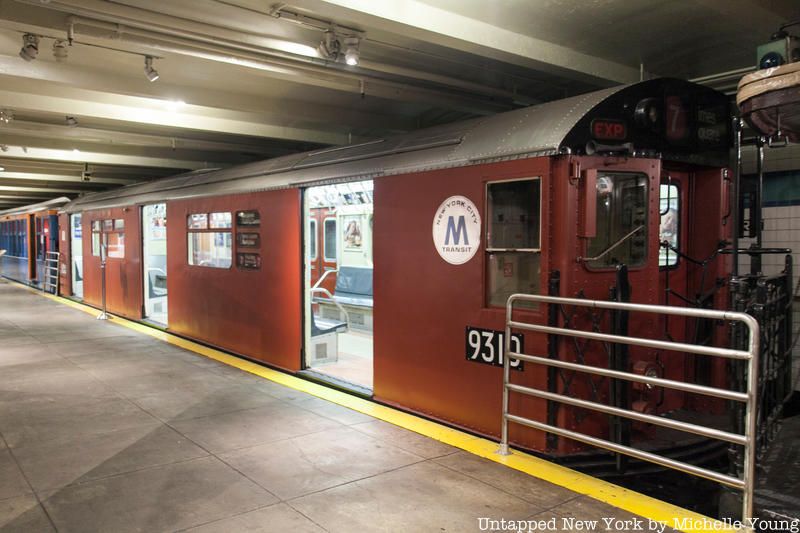NYC’s Forgotten ‘War on Christmas Trees’
Discover how an obscure holiday crackdown affects festive street vendors today!


We’ve seen subway cars without seats and ones with open gangways, but did you know that New York City once boasted a collection of all white cars? In September 1981, the MTA introduced one dozen all-white 7 trains in an attempt to combat graffiti, which frequently covered subway cars. The pilot program was appropriately called “The Great White Fleet,” which Upout.com notes was inspired by a single white car that miraculously remained free of paint for two months while sitting in a train yard in Corona, Queens. The white subway car and other colors which were experimented with, including dark green, are shown as part of an exhibition at the New York Transit Museum, Reign of the Redbirds.
The car was placed in Corona to test the effectiveness of a new security system, called the “Berlin Wall” method, which included a chain-link fence, barbed wire and several roaming German Shepherds. Granted, the excessive security measures could have been the real reason that the initial white car stayed paint free, but that was besides the point for then mayor Ed Koch. In the face of an increasingly graffiti-ridden subway system, he was convinced that immaculate car exteriors would be enough to deter artists from defacing them. In an even more unbelievable move, Koch also suggested using wild wolves to deter taggers.
”White has proven to be a deterrent” to vandals, said Jeanne Edelson, a spokesperson for the New York Transit Authority, to The New York Times in 1981. By January 1983, the entire IRT Flushing Line fleet was painted over, and fitted with anti-climbers, pantograph gates and body sills, according to NYCsubway.org, followed by cars on the Lexington Avenue local and express lines. Despite these efforts, and the assertion made by Edelson, however, “The Great White Fleet” could not stand up against spray paint-wielding artists. Soon enough, they were transformed into what TimeOut describes as “moving street art,” essentially rolling canvases. By 1985, the train cars were painted over in the classic red color, for which the Redbird cars got their nickname.

A Redbird subway car in the New York Transit Museum
The war on graffiti would continue to rage on until David Gunn, who became the president of the New York City Transit Authority in 1984, launched his “Clean Trains” program, which tackled larger systemic problems to rehabilitate the system. As soon as subway cars were tagged, the MTA would immediately clean them or pull them entirely from the system.
On May 12, 1989, the city officially declared victory over tagged trains, but graffiti on the New York City subway has never stopped. Artists continue to cover subway cars knowing that they’ll be cleaned in train yards before they have a chance to make it onto the tracks, according to Gizmodo. Furthermore, controversy surrounding the validity of graffiti as an actual form of art still continues to bubble and spill over, whether spray paint is found on a building, inside a gallery or on the side of the 7 Train. Most artists who do tag a subway car do so for the thrill of it (and likely for the photo op that it presents). Just Google #subwaygraffiti to see the plethora of ephemeral works that once decorated our system.
Next, check out the Top 10 Secrets of the NYC Subway and see Photos Inside the Abandoned City Hall Station.
Subscribe to our newsletter